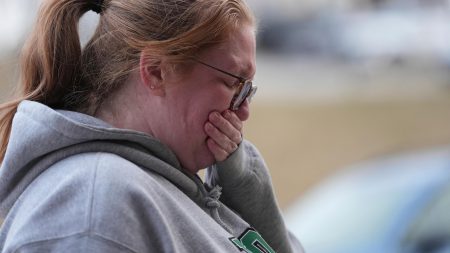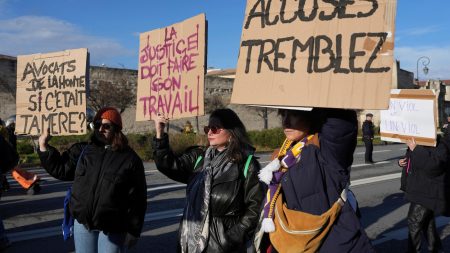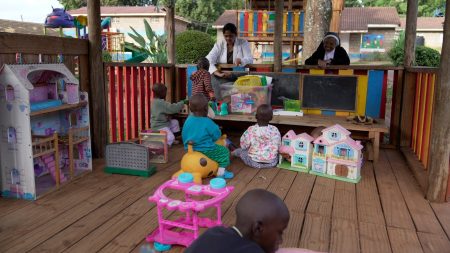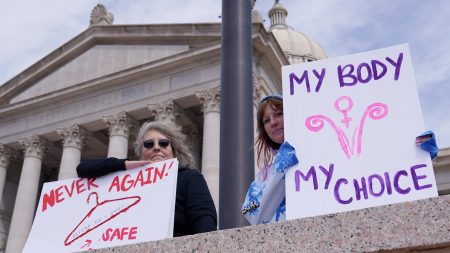A Glimmer of Hope: The Reopening of Rafah Crossing for injured Palestinian Children
In a rare moment of respite amidst the ongoing conflict, the Rafah Crossing, Gaza’s sole border crossing not under Israeli control, was opened on Saturday to allow 50 sick and wounded Palestinian children to cross into Egypt for urgent medical treatment. This marked the first time the crossing has been operational since Israel captured it nearly nine months ago during its military offensive in Gaza. The reopening of the crossing is a significant step forward in implementing the ceasefire agreement reached between Israel and Hamas last month, and it highlights the dire need for humanitarian aid in a region ravaged by war.
[Image: Palestinian children being transferred to ambulances at the Rafah Crossing.]
The Humanitarian Crisis in Gaza
The decision to reopen the Rafah Crossing comes as Gaza’s healthcare system teeters on the brink of collapse. Over the past 15 months, Israel’s military campaign against Hamas has left Gaza’s hospitals and medical facilities in ruins. According to the Palestinian Health Ministry, more than 110,000 Palestinians have been injured, and the number of those requiring urgent medical attention continues to grow. The scarcity of medical resources has made it impossible for Gaza’s overwhelmed hospitals to provide adequate care, with many critical treatments and specialized surgeries no longer available. Mohammed Zaqout, the director of hospitals in Gaza’s Health Ministry, has estimated that over 6,000 patients are in need of immediate evacuation for treatment abroad, while more than 12,000 others require urgent care that cannot be provided locally. The crossing reopening is a lifeline for these patients, offering a glimmer of hope for those whose lives depend on access to medical care outside Gaza.
[Image: A young Palestinian girl with an amputated foot being rushed to a hospital in el-Arish.]
The Emotional Toll on Families
The sight of Palestinian children being rushed across the border on stretchers, some with limbs amputated, is a harrowing reminder of the human cost of the conflict. Among the children evacuated on Saturday was a young girl whose foot had been amputated, a devastating injury that underscores the severity of the wounds being treated. Zaher al-Wahidi, an official with Gaza’s Health Ministry, confirmed that by Saturday evening, 37 children had successfully crossed into Egypt, where they were admitted to hospitals in the nearby city of el-Arish and other locations. Accompanying the children were around 60 family members, many of whom expressed relief and hope as they escaped the dire conditions in Gaza. For these families, the reopening of the Rafah Crossing is not just a logistical breakthrough but a deeply personal one, offering a chance to save their children’s lives.
[Image: Palestinian families accompanying their children at the Rafah Crossing.]
The Diplomatic Efforts Behind the Reopening
The reopening of the Rafah Crossing is the result of intense diplomatic negotiations involving Israel, Egypt, Hamas, and the Palestinian Authority. The crossing was closed in early May after Israeli forces seized it during a military offensive in southern Gaza. Egypt, in protest, shut down its side of the crossing, further isolating the already besieged territory. The breakthrough came after Hamas released the last living female hostages in Gaza, a crucial condition set by Israel for the crossing’s reopening. The agreement reflects the fragile balance of power in the region, where humanitarian needs often take a backseat to political and security concerns. European Union monitors, who were present at the crossing before 2007, are set to return, adding an international layer of oversight to the process.
[Image: European Union monitors at the Rafah Crossing.]
The Future of the Rafah Crossing
While the reopening of the Rafah Crossing is a significant step, the challenges ahead are immense. The crossing will be staffed by Palestinians from Gaza who previously served as border officers with the Palestinian Authority (PA), but they will not be permitted to wear official PA insignia. This compromise reflects Israel’s refusal to allow either Hamas or the PA to officially manage the crossing, citing security concerns. Israel has also screened the officers to ensure they have no ties to Hamas, a condition that highlights the deep mistrust between the parties. Despite these limitations, the reopening of the crossing offers a potential lifeline for the thousands of Palestinians in need of medical care, though officials caution that the numbers being evacuated fall far short of the demand. As Mohammed Zaqout noted, "we hope the number will increase."
[Image: Israeli troops at the Rafah Crossing.]
Looking Ahead: The Road to Peace
The reopening of the Rafah Crossing is a crucial first step in implementing the broader ceasefire agreement between Israel and Hamas. Negotiations on the next phase of the deal, which includes a permanent ceasefire, a full Israeli withdrawal from Gaza, and the release of any remaining hostages, are set to begin on Monday. However, the path forward remains fraught with challenges, particularly Israel’s opposition to allowing the Palestinian Authority to control postwar Gaza. The involvement of Egypt and the European Union in monitoring the crossing offers a ray of hope, but the ultimate success of these efforts will depend on the willingness of all parties to compromise and prioritize the needs of the Palestinian people. For now, the sight of injured children crossing into Egypt for treatment serves as a poignant reminder of the human cost of the conflict and the urgent need for a lasting peace.















